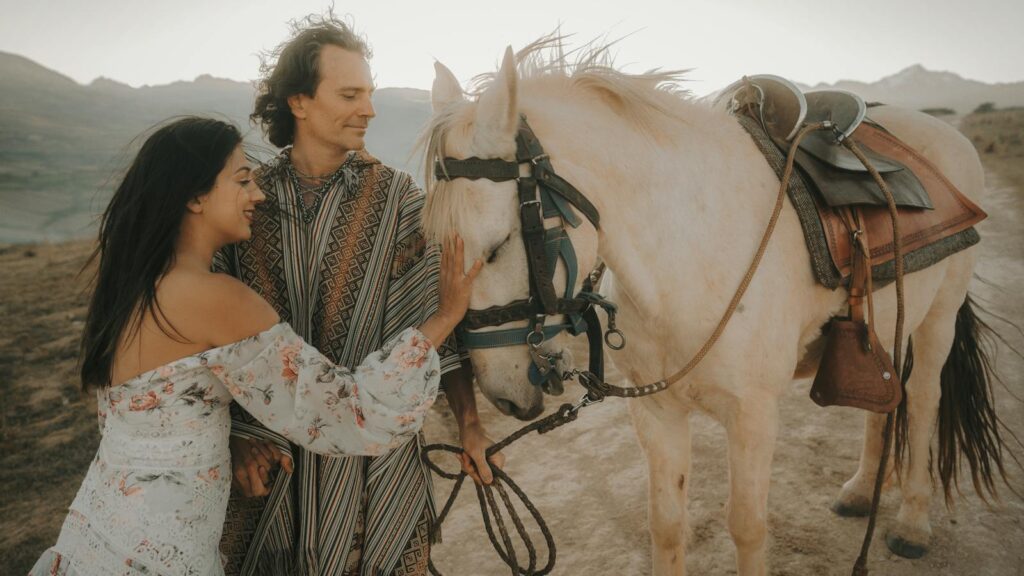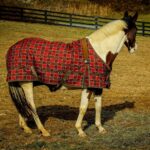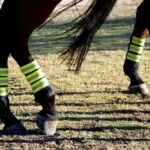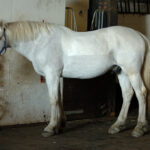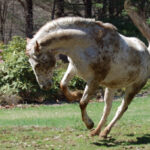When it comes to horse training, achieving ambidexterity – the ability to work equally well from either side – is a vital yet often overlooked skill. Many riders and trainers inadvertently create “one-sided” horses by consistently approaching, mounting, and cueing from the left side only. This traditional practice leaves horses unbalanced and potentially resistant when handled from the right. A truly well-trained horse should respond confidently and correctly regardless of which side you’re working from. This comprehensive guide will walk you through the process of developing a balanced, responsive horse that works equally well from both sides.
Understanding Equine Laterality
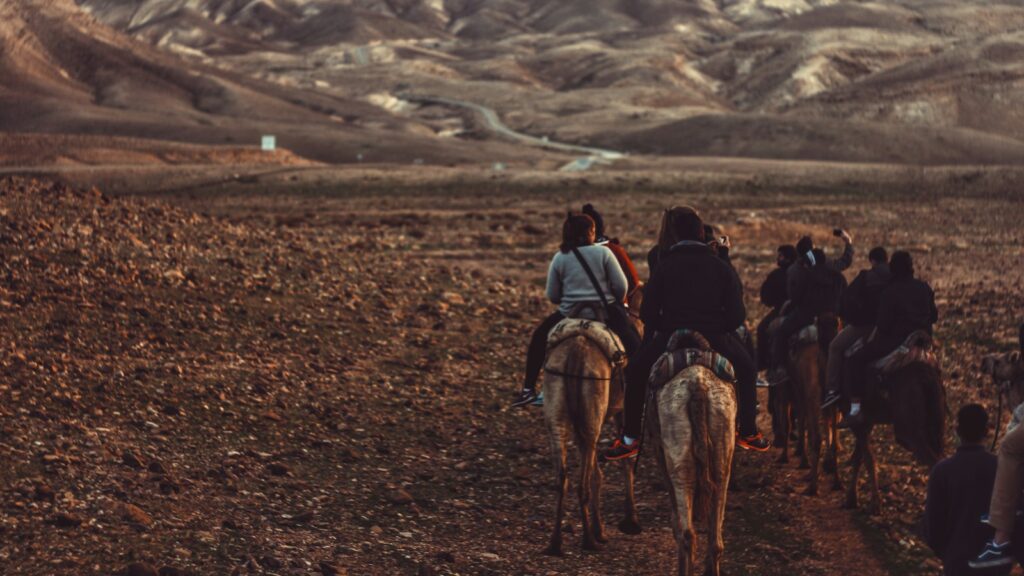
Like humans, horses naturally favor one side over the other – a concept known as laterality. Research indicates that most horses have a dominant side, which influences how they move, balance, and respond to pressure. This natural asymmetry means that your horse will initially find work easier on one side compared to the other. You might notice your horse bends more willingly in one direction or picks up one lead more readily than the other. Understanding this natural predisposition is crucial because it helps you recognize when your horse’s difficulty with certain tasks stems from physical asymmetry rather than behavioral resistance. Acknowledging these natural tendencies allows you to develop appropriate training strategies that gradually build strength and confidence on the weaker side.
The Benefits of Two-Sided Training
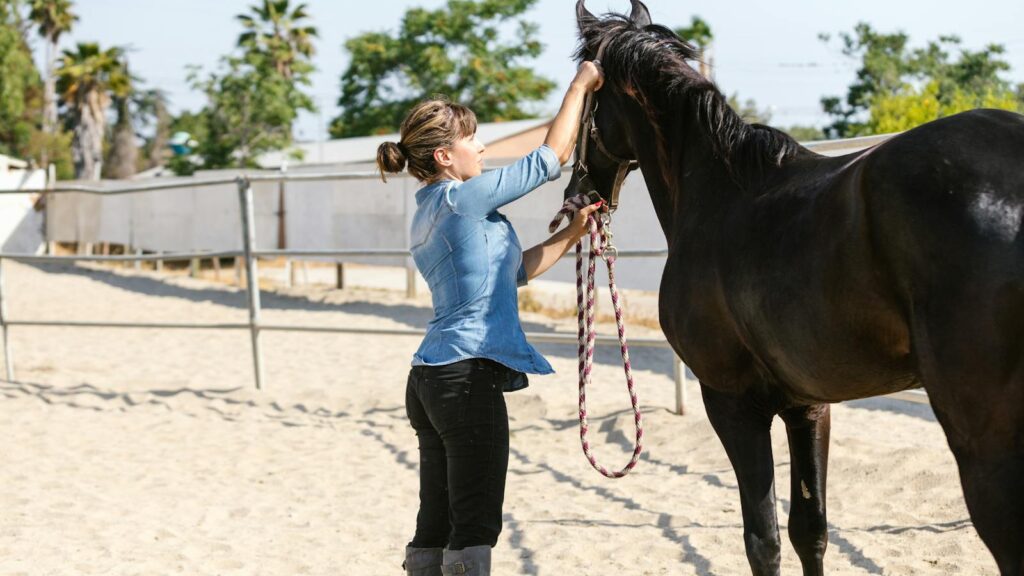
Training your horse to work equally well from both sides offers numerous benefits that extend far beyond simple convenience. Physically, balanced training helps develop symmetrical muscling, preventing the overuse injuries that commonly occur when horses consistently work more on one side. Mentally, two-sided training creates a more adaptable, confident horse that can handle novel situations with less stress. From a practical standpoint, a two-sided horse is safer to handle in emergency situations when you might need to mount, dismount, or work from the non-traditional side. Perhaps most importantly, horses trained from both sides typically demonstrate better overall responsiveness and understanding of cues, as they learn concepts rather than just memorizing patterns from a single direction.
Starting With Basic Groundwork
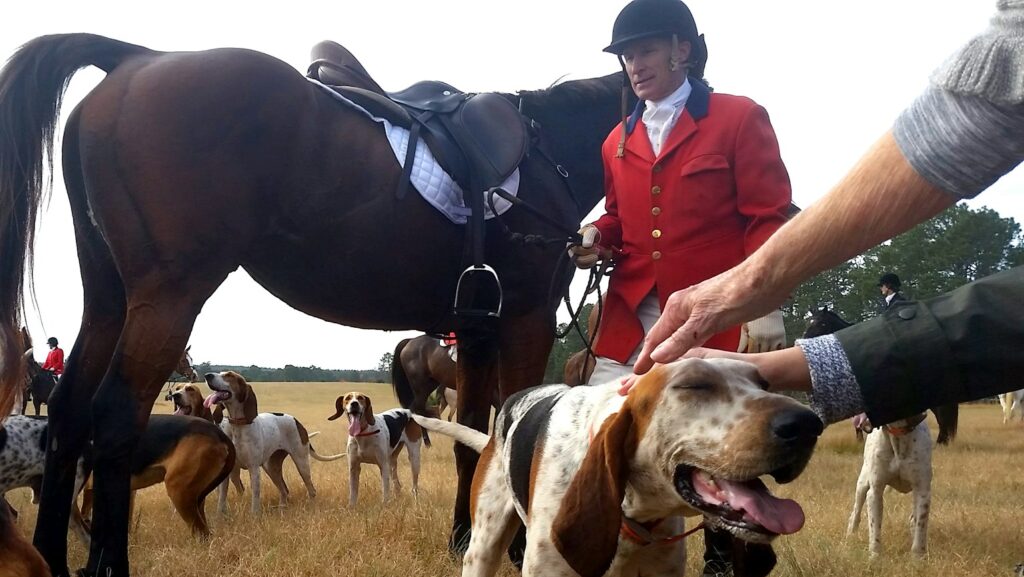
Before attempting mounted work from both sides, establish solid groundwork fundamentals from each direction. Begin by simply handling your horse from both the left and right sides during routine activities like grooming, tacking up, and leading. Practice basic leading exercises where you walk on either side of your horse, teaching them to match your pace and respect your space regardless of which side you’re on. Introduce basic yielding exercises, asking your horse to move their hindquarters and shoulders away from pressure applied from either side. Initially, your horse may show confusion or resistance when approached from their less familiar side, so be patient and reward even small tries with immediate release of pressure and verbal praise. Consistent, brief practice sessions from both sides will quickly establish a foundation of two-sided respect and understanding.
Developing Two-Sided Lunging Skills

Lunging provides an excellent opportunity to develop your horse’s balance and responsiveness from both sides without the complication of rider weight. Start by establishing clear, consistent cues that work identically regardless of which direction your horse is traveling. Pay careful attention to your body position, ensuring you use the same signals when asking for transitions on both the left and right circles. Many horses find one direction notably more challenging, often struggling with balance or showing resistance through behaviors like falling in toward you or rushing. When working in the difficult direction, begin with shorter sessions and larger circles to help your horse find their balance. Gradually decrease circle size and increase duration as your horse develops strength and confidence. For balanced development, spend more time working in the challenging direction until your horse shows equal competence in both.
Mounting From Both Sides
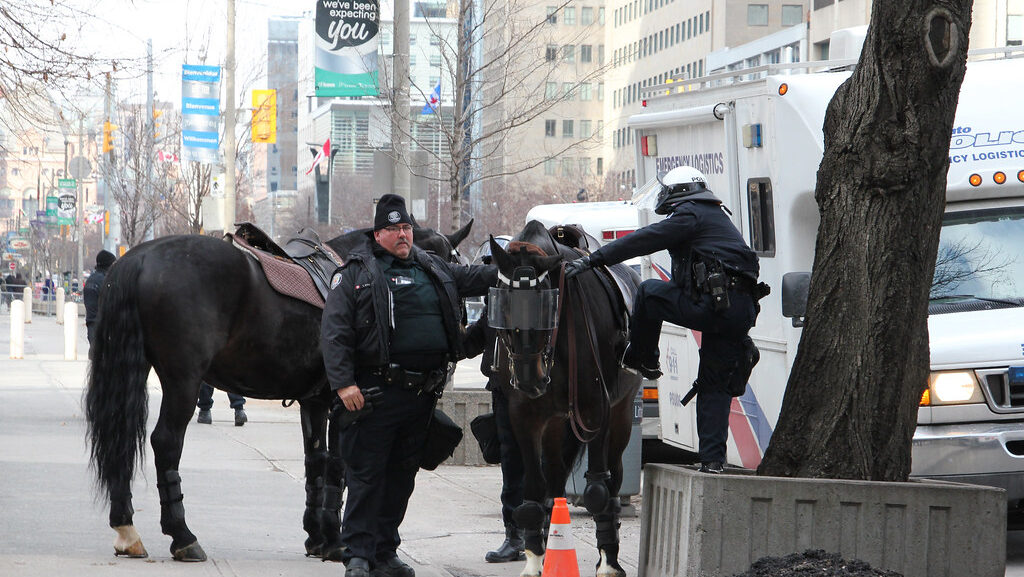
Mounting from the right side often represents the first significant challenge in creating a truly two-sided horse. Start by desensitizing your horse to having you stand on their right side while holding the reins in mounting position. Once comfortable with your presence, practice leaning weight against their side and gently bouncing as if preparing to mount. Use a mounting block for safety and to minimize strain on your horse’s back during this learning process. When your horse stands quietly during these preparations, swing your leg over slowly, pausing if you feel tension and proceeding when they relax. Once aboard, sit quietly for a moment before asking for any movement. Initially, mount from the traditional left side for actual riding sessions, using right-side mounting as a training exercise until your horse shows equal comfort with both approaches.
Teaching Two-Sided Rein Cues
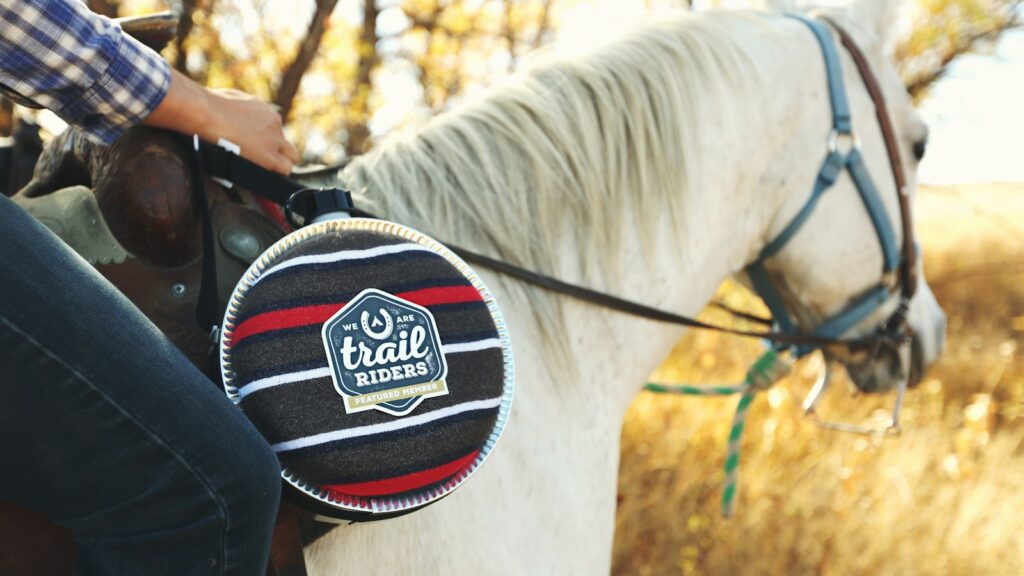
Many horses become confused when rein pressure comes from an unexpected direction, making two-sided rein cue training essential for balanced development. Begin with simple direct rein cues, asking for basic turns while riding at a walk to help your horse understand that the same principles apply regardless of direction. Practice opening (leading) reins and direct reins equally from both sides, ensuring your cues remain consistent and clear. Pay special attention to your horse’s response to neck reining, as many horses initially understand this cue from only one side. If your horse struggles with a particular rein cue from one side, return to groundwork to reinforce the concept before trying again under saddle. Remember that rein cues feel physically different to your horse depending on which direction they’re bending, so patience and consistency are crucial as they learn to interpret these sensations correctly from both sides.
Balanced Leg Cues
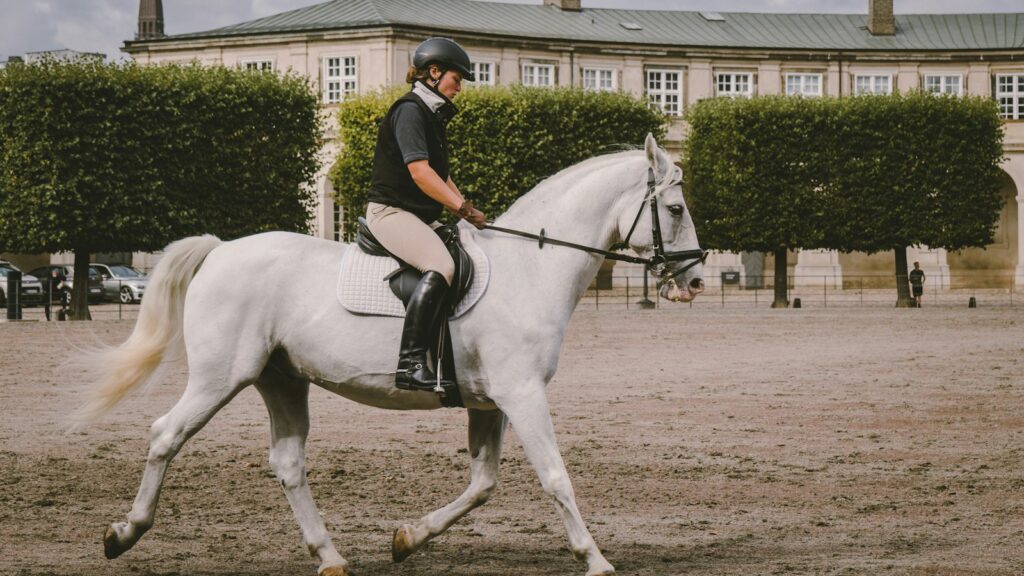
Developing clear, consistent leg cues from both sides creates a responsive, well-rounded horse. Begin by focusing on basic leg yields, asking your horse to move away from leg pressure applied on either side. Many horses respond readily to left leg pressure but resist or misunderstand right leg cues, reflecting their traditional training bias. When introducing new leg cues, start with your horse’s more responsive side to establish the concept clearly before attempting it on the more challenging side. Use supporting rein cues initially to help clarify what you’re asking, gradually reducing this support as your horse gains understanding. Practice transitions between gaits using leg pressure applied evenly from both legs, helping your horse learn to respond to balanced cues rather than relying primarily on cues from one side. Remember that achieving balanced responses requires consistent practice with special emphasis on the weaker side.
Working With Lateral Movements

Lateral movements provide excellent opportunities to develop your horse’s two-sided responsiveness while building balanced muscle development. Start with simple leg yields, moving your horse diagonally across the arena in both directions. As coordination improves, introduce shoulder-in, haunches-in, and eventually more advanced movements like half-pass. Most horses find lateral work significantly more challenging in one direction, often showing resistance through stiffness, incorrect bend, or poor tracking of the feet. When working in the difficult direction, begin with just a few steps of the movement, immediately rewarding quality over quantity. Film your sessions or work with mirrors to ensure you’re applying aids symmetrically and not inadvertently making one direction harder through your own body position. Consistent, thoughtful lateral work gradually creates a horse that bends, yields, and carries themselves equally well in both directions.
Balancing the Canter Work

The canter often reveals the most significant asymmetries in your horse’s development, making balanced canter work essential for true two-sided training. Begin by analyzing your horse’s canter departures, noting which lead comes more easily and which presents challenges. For many horses, the right lead proves more difficult due to their traditional left-side training history. When working on the challenging lead, set your horse up for success by requesting the departure from a slightly haunches-in position, which naturally positions their body for the correct lead. Practice canter-trot-canter transitions to develop clean, balanced departures rather than drilling multiple attempts of the difficult lead. Pay special attention to your own body position, as rider asymmetry often contributes significantly to lead preference. Work simple exercises like large figures of eight with flying or simple lead changes in the center to help your horse become equally comfortable carrying both leads.
Addressing Challenges and Resistance
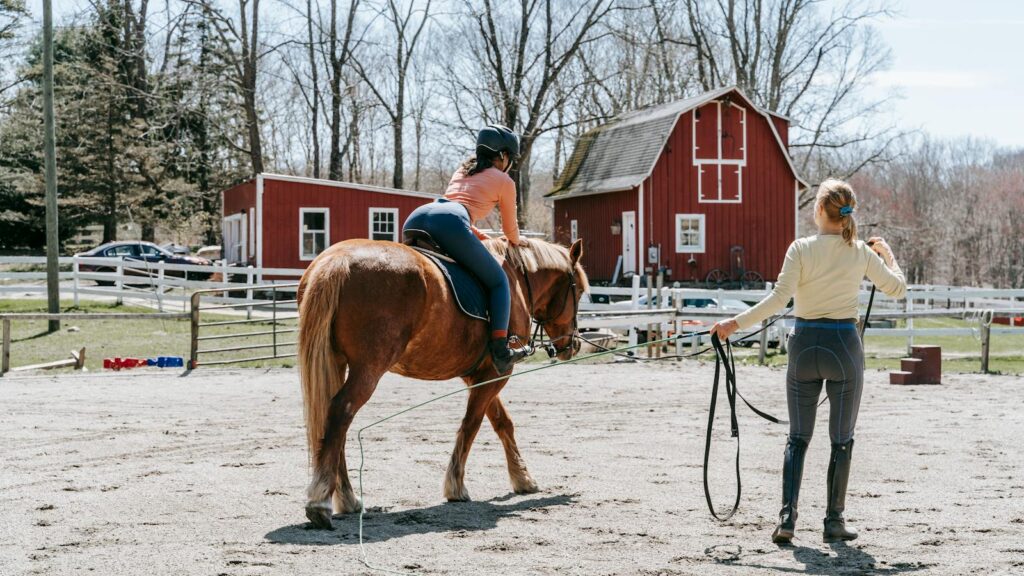
When teaching two-sided work, most horses will show periods of confusion or resistance, particularly when working on their less-developed side. Distinguish between physical limitations and behavioral resistance to address challenges appropriately. If your horse physically struggles with balance or strength on one side, incorporate targeted exercises like carrot stretches, backing up on slight inclines, or slow, controlled work on gentle slopes to develop the necessary muscling. For behavioral resistance, return to groundwork principles, breaking down complex requests into simpler components that your horse can successfully accomplish. Avoid drilling problem areas, which often increases frustration for both horse and rider. Instead, intersperse challenging exercises with familiar, confidence-building activities. Remember that inconsistent handling or unclear cues often trigger resistance, so critically evaluate your own consistency when your horse seems confused or resistant.
Using Obstacles and Trail Work
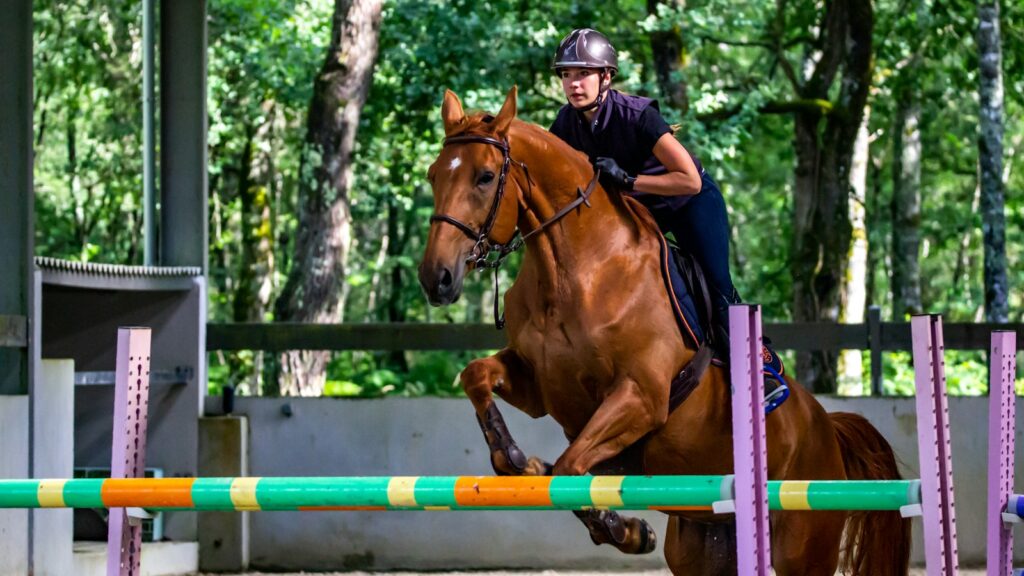
Obstacles and trail work provide practical applications for two-sided training while keeping sessions interesting and varied. Set up simple obstacles like ground poles, cones, or barrels that you can navigate from either direction, requiring your horse to bend and respond to cues from both sides. Practice approaching and passing obstacles on both your left and right sides, helping your horse become comfortable with objects appearing from either direction. On the trail, alternate which side you use when opening gates, crossing water, or navigating narrow passages. These real-world scenarios reinforce the practical benefits of two-sided training, as your horse learns to confidently handle whatever situation arises regardless of positioning. Trail obstacles also provide natural motivation for your horse to respond to unusual cues, such as needing to sidepass right when the traditional left movement isn’t possible due to terrain.
Creating Training Patterns That Build Symmetry
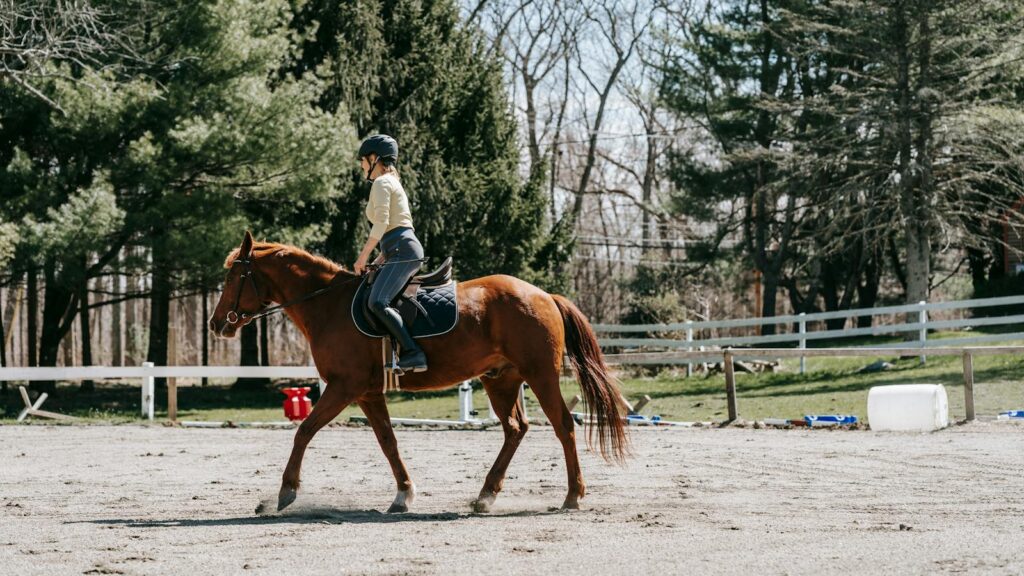
Intentionally designed training patterns significantly accelerate your horse’s two-sided development by systematically addressing weaknesses. Create mirror-image exercises that require equal work in both directions, such as serpentines, figure eights, and spiraling circles. When designing training sessions, begin with your horse’s stronger side to establish confidence before attempting the same pattern in the more challenging direction. Plan sessions that equally distribute work between directions, tracking the number of circles, transitions, and lateral movements to ensure balanced development. Incorporate exercise variations that specifically target your horse’s weaker areas, such as spending more time in right bend if that’s your horse’s difficulty. Use arena markers or cones to create visual references that help both you and your horse maintain symmetrical patterns and avoid unconsciously making one direction larger or easier than the other.
Maintaining Two-Sided Competence

Once your horse demonstrates basic two-sided competence, consistent maintenance ensures these skills remain sharp and continue developing. Incorporate at least some right-side work into every training session, even if just for a few minutes during warm-up or cool-down. Regularly alternate which side you use for mounting, leading, and routine handling to maintain your horse’s comfort with both approaches. Periodically film your riding sessions or work with a knowledgeable instructor who can identify subtle asymmetries before they develop into significant imbalances. Remember that your own body asymmetries directly impact your horse, so address your personal balance through appropriate fitness training and body awareness. Make two-sided work a fundamental training philosophy rather than a specialized skill set, considering balanced development in everything from groundwork to advanced maneuvers.
Conclusion

Developing a truly balanced, two-sided horse requires patience, consistency, and thoughtful training progression. While the process demands extra attention compared to traditional one-sided approaches, the rewards are substantial. A horse that works confidently from both sides demonstrates greater physical soundness, mental adaptability, and overall responsiveness. This comprehensive skill set not only enhances performance across disciplines but also creates a safer, more versatile equine partner capable of handling whatever situations arise. By committing to balanced development from the start of your training relationship, you establish a foundation of symmetry that will benefit your horse throughout their entire career.

